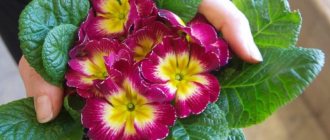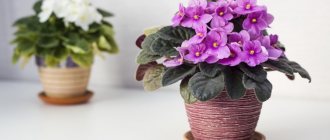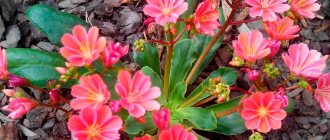- October 27, 2018
- Houseplants
- Svetlana Syabitova
This plant can decorate not only the garden; a large number of varieties have been bred to decorate residential and office spaces. Even novice flower growers can grow indoor lilies, photos and names of varieties of which can be found in the article. The plant is widely used in cosmetology and medicine. The bulbs of some species are quite edible, which is what small rodents, such as mice and squirrels, use.
Classification of indoor lilies
At home, lilies of a wide variety of colors, sizes and shapes are grown. Many varieties are specially bred for indoor floriculture. The most commonly used classification is based on the shape of the flower's petals. Below are photos and names of domestic lilies, or rather, the most popular varieties:
- the cup-shaped flowers are known as the Grand Commander, Gilded Lily, Belle Lily and Empress of China varieties;
- funnel-shaped petals - this species is represented by the largest number of varieties, for example, Royal Lily, Royal Gold;
- the flowers have bent petals, there are not very many varieties of this species, there are dwarf ones, Citronella.
Asian hybrids can be distinguished as a separate group; a distinctive feature of this group is the absence of odor. These are decorative species, with flowers of various colors, they can have stripes, spots, specks - beautiful house lilies, photos and names of which are also presented in the article. This species is highly resistant to diseases and is less susceptible to pests.
Curly hybrids with amazing flower shape. They need a little more moisture; they love leaf humus. For beginning flower growers, it is recommended to choose hybrid varieties; they are best adapted to home conditions.
Amazonian white indoor lily, photo and name, which is most often indicated in reviews of gardeners, has beautiful 15 cm flowers and a delicate aroma.
Sometimes lilies are confused with amaryllis. The main difference is the time of flowering: amaryllis blooms in winter, lilies bloom in summer and autumn.
Varieties of domestic lily
South America is considered the birthplace of this bulbous crop. Breeders know more than 80 varieties of lilies, many of which are ideal for home breeding, for example:
- Grand Commander;
- Royal Gold;
- Empress of China;
- Asian hybrids;
- Lily the Beautiful;
- L. Citronella;
- Gilded lily.
There are varieties with wide, bowl-like flowers. Some hybrids have funnel-shaped buds collected in tubes, while others produce inflorescences with slightly bent petals. All buds have a delicate aroma and look great in any interior and garden bed. They quickly adapt to new conditions and take root without problems after transplantation.
Some varieties of this indoor plant do not tolerate coolness well; tender young indoor lilies suffer from fungal diseases, but with proper care they become a real decoration of a loggia, balcony, winter garden, window sill and delight with their abundant flowering for a long time. They create an atmosphere of continuous celebration and spring warmth around themselves.
Planting indoor lilies
You can plant a plant yourself, but to do this you need to know how to do it correctly. First of all, you need to take care of the planting material. Bulbs are most often used, but seeds can be taken. First you need to get acquainted with the Indoor Lily flower, the photo and name of each variety, which, as a rule, are indicated in the annotation for the bulbs. The best time to purchase is autumn. It is important to pay attention to the quality of the bulbs; they should be smooth, dense, without scales or spots. Before planting, the material should be treated with a solution of potassium permanganate.
What matters is the size of the container in which the lily will grow. The pot should be deep, and the width should be calculated so that there is a distance of 3 cm from the bulb to the edge of the pot. Most often, containers with a diameter of 15 cm are used. If you choose a pot that is too large, the lily may not bloom at all.
Procedure for planting lily bulbs:
- Make drainage at the bottom of the pot: expanded clay and small stones will do.
- Sprinkle 5 cm of soil on top for bulbous plants; it should be light and nutritious.
- Place the onion in the center, carefully straightening its roots.
- Add soil and compact it slightly. As a result, the bulb should be placed in the ground to half its height.
- Moisten a little.
You can make the soil for indoor lilies yourself; for this you need to prepare the following composition: 3 parts of turf soil, 1 part each of river sand, humus, leaf soil.
The pot with the plant should be placed in a cool and well-lit place. After some time, the first shoots will appear, after which the lily is transferred to a permanent place.
You can plant several bulbs of the same variety in one container, but with different flower colors. As a result, during flowering you will get a very beautiful composition. You can see photos of domestic lily flowers that look spectacular in group plantings below.
Landing rules
To plant lilies, you need a large pot of sufficient depth. The flower needs soil preparation and drainage. It is important to leave 3-4 cm of the height of the container unfilled. When stems appear, you need to add soil to the container.
After planting, the pot is placed in a place with cool air (suitable temperature - no more than +10°C). The flower requires regular watering. However, water should not linger in the soil, so the pan must be cleared of excess liquid.
When stretching the stems up to 10 cm, it is necessary to move the plant to a place with air heated to +16°C. Room temperature may rise as the flower develops. From planting to flowering of the lily, it takes about 18-20 weeks.
Preparing garden bulbs
It is necessary to dig up the bulbs in the fall (end of September - first half of October). Then the material is laid out in wooden boxes, the bottom of which is lined with sphagnum or peat. Storage is carried out at temperatures above +10°C. The soil must be moistened for 2 months. It is important to prevent water from stagnating and clean the tray regularly.
Composition of soil for growing lilies
A lily in a pot is grown in specially prepared soil. The soil needs to be light, loose, filled with nutrients.
The soil contains the following ingredients (in proportions 3:1:1:1):
- turf;
- leaf soil;
- humus;
- purified river sand.
To plant Liliaceae, you need to create a drainage layer. It is optimal to use expanded clay, ceramics, sawdust, and pebbles. At least 1/3 of the capacity is allocated to the drainage layer. It is not recommended to use bulk pots, because... The flowering period may be reduced. Drainage is laid in layers. In the greenhouse you can plant bulbous varieties in a tub, decorative box or container.
Plant care
For normal growth and abundant flowering, it is necessary to create favorable conditions for indoor lilies. When purchasing an indoor lily, a photo, name and care are included with the planting material. You should pay attention to them. Some varieties have slight distinctive features in their content. If everything is done correctly, the plant will not be affected by diseases and pests.
At the very beginning of growth, the flower needs a temperature of +10°C, after it has reached a height of 10 cm, it must be moved to a lighted place with a temperature of +16°C, but no more.
Later, for the growth of an adult plant, a temperature of +25 ° C and a lot of sun will be required. Lily is not afraid of direct sunlight, so it feels great on southern windows, and in the summer on balconies and loggias.
The indoor lily needs regular watering, but does not tolerate stagnation of water. It is necessary to water the plant as soon as the top layer of soil dries slightly. Water needs to be at room temperature. Experienced flower growers recommend watering the lily a little every morning and evening in the spring and summer.
If the room temperature is too high, spraying should be carried out. It must be remembered that lilies do not need too high humidity. To remove dust from the plant, you should wipe the leaf blades with a damp sponge once a week.
When buds appear, it is necessary to tie the plant to a support. The photo below shows how to do this correctly with house lilies.
How to care for a domestic lily during its growth period
Growing lilies in pots requires proper care. For good growth and a long flowering period, the bush needs fertilizers, maintaining the required level of humidity in the room and watering. Experts recommend loosening the soil next to the lily stems to a depth of no more than 5-6 cm to prevent damage to the roots. The procedure helps ensure the flow of oxygen for the development of the root system.
When the stems reach a height of 10-12 cm, the plant is taken out to the loggia or to the front garden. However, step-by-step preliminary hardening of the flower is required. The pot with the lily is placed on the balcony for 0.5 hours. The time is extended every day by 10-15 minutes. When the temperature drops to less than +12°C, the flower is brought into the house. After the hardening period in summer and autumn, lilies are grown on the veranda.
Watering
Caring for a lily includes mandatory watering. Flowers are moisture-loving varieties. If the soil is insufficiently moistened and the air is dry, the flowering period may be delayed or not occur. Stagnation of water in the container is not allowed; for this purpose, the soil is drained.
The plant is watered with water at room temperature. Experts recommend determining the needs of a plant by the type of soil, without being guided by a watering schedule. The soil is moistened when its surface dries. When the air is dry, it is necessary to spray the plant to prevent the leaves from drying out. Moisture should not get on the buds. It is optimal to keep the soil moist.
Fertilizer
Indoor Lilies require regular soil fertilization. It is necessary to feed the soil from the beginning of stem growth. Manufacturers have developed complex fertilizers for lily varieties. However, you can combine the addition of organic matter and mineralized complexes. Fertilizing the soil is carried out 3 times every 30 days before the formation of buds. During the flowering period, the plant needs to be fed once a month.
Lilies grow well when the soil is fertilized with potassium-phosphorus or nitrogenous substances. To speed up growth, add ash to the soil.
Experts suggest following the schedule for applying organic fertilizers:
- The first feeding is carried out after planting the bulbous plants; the procedure promotes the development of leaves, stems, and ovaries.
- The next fertilizer is placed in the soil when the peduncle buds before the flowering period. The addition of components promotes the formation of buds.
- It is necessary to feed the plant in the second half of August to preserve the bulbs during the wintering period.
Lighting
Indoor lilies require diffuse lighting; it is optimal to place flower pots in the southwest or southeast direction. Experts recommend installing the tubs on a stand next to the window. Flowers located on the windowsill may dry out, turn yellow, and stop flowering. The plant is not recommended for direct sun rays in the afternoon.
Air temperature
House lilies are grown at different temperature conditions (+12…+30°C). It is optimal to maintain average room temperature (+16…+20°C) in the room. Plants can withstand periods of temperatures down to +10°C; sub-zero temperatures are not recommended. In spring, the lily can be moved to the loggia or the window in the room can be opened more often.
In winter, tubs of lilies can be stored on the loggia under a reliable shelter of dry leaves, peat, and moss. The tub is covered with polyethylene to maintain the necessary soil moisture and retain heat. You can prevent bulbs from rotting by using ventilation holes. During the dormant period, the condition of the planting material is checked.
Air humidity
House lilies do not need excessively humidified air. Spraying the plant is necessary during hot periods. To clean the foliage, wipe the plants once every 7-8 days with a moistened sponge or cotton wool. The plant needs to increase air humidity in spring and summer. However, dampness in the room increases the risk of plant rot.
Feeding
For the normal development and flowering of indoor lilies, additional nutrition is necessary; if there is a lack of it, buds may not form. It must be remembered that active growth requires nitrogen fertilizers, and for flowering potassium and phosphorus fertilizers should be applied.
The plant responds well to organic fertilizing, therefore, starting in spring, you can apply slurry, which is diluted with water in a ratio of 1 to 10. This fertilizer should be done once every three months.
It is best to feed the plant according to this scheme:
- the first feeding is done at the beginning of growth;
- the second during the formation of buds;
- the third is introduced after flowering.
In addition, you can add wood ash to the soil throughout the season. The indoor lily will decorate any room; photos of the best specimens can often be found in reviews of flower growers.
Care and feeding
If you follow the recommendations for caring for a white lily, it will bloom very beautifully and fill the house with a magical aroma. There are several general rules that should be used when caring for different varieties of ornamental plants:
- Watering. All species require regular but moderate watering. Do not allow the soil to become waterlogged, as this can destroy the white lily. Lack of moisture also negatively affects the condition of the flower.
- Feeding. Throughout the growing season, the plant must be fed with organic fertilizers. A non-concentrated, liquid solution of mullein, similar in consistency to ordinary water, is best suited for this.
- Ventilation. All species are sensitive to dry and stale air. The room in which the plant is located must be regularly ventilated, but avoid drafts.
- Lighting. The indoor lily is a light-loving plant that requires care and attention. For normal growth and development, it needs a sufficient amount of solar heat and light.
With proper care, the flower will delight you with bright inflorescences
After flowering, all species enter a dormant period. During this time, your care will be a little different. The flower needs to be moved to partial shade, watered less often, no need to feed. After this period is over, mineral fertilizers are added to the soil. Why is this necessary? To provide the plant with the strength for abundant and long-lasting flowering, saturate it with useful substances.
Obtaining indoor lilies from seeds
You can grow indoor lilies from seeds; the process is more labor-intensive and time-consuming. But the result will be a large number of plants that will be adapted to your conditions. First of all, you should take care of the planting material for indoor lilies, look at the photo and name in the article, and choose the most suitable option. After this, in order to get a healthy and beautiful plant, you should pay attention to the recommendations of gardeners.
Tips for growing lilies from seeds:
- their germination temperature is 20-25°C, different varieties may differ slightly;
- germination depends on the time of seed collection, the shelf life of planting material is no more than two years;
- no pre-treatment with cold is required;
- to speed up seed germination, you need to soak them for 15 hours;
- the best time for planting is February-March;
- soil composition: sand, peat, humus, garden soil;
- seed placement depth 0.5 cm;
- containers for planting should be selected with a height of about 10 cm;
- as soon as seedlings appear, the plants should be accustomed to normal conditions;
- diffused sunlight is required;
- do not allow the soil to dry out;
- When the first shoots appear, you need to reduce the temperature to 15-20°C.
As soon as the first true leaves appear, the plants should be transplanted into separate pots.
This process takes a lot of time and certain skills are required, so it is better for novice gardeners to purchase bulbous planting material.
Growing lilies at home
Plants are grown from seeds and bulbs. When using the first method, the bushes are less susceptible to diseases and insect pests. With proper care at home, flowering occurs already in the second year after planting the seeds.
How to grow a lily from seeds
Buy planting material or prepare it yourself. The best time for sowing is March. If you choose February, then illuminate the seedlings with a phytolamp. Landing is carried out as follows:
- Fill the box with fertile soil.
- Scatter the seeds over the soil. The distance between them is at least 1 cm.
- Place a layer of sand on top.
- Water and cover the box with glass or a transparent bag.
- Store the container where it is warm and dark. The air temperature should be 20–22 degrees. Make sure the soil is always slightly moist.
- When sprouts appear, place the box in the light, away from direct sunlight. For full development there must be a 12-hour daylight hours.
- After 2-3 leaves appear, pluck the bulbs.
Seeds and first shoots of lily
Growing lilies from a bulb
You can plant several different bulbs in one pot. Subsequently, you will get an interesting flower arrangement. Please note that white lilies are grown only from bulbs:
- Choose planting material without rot or damage.
- Place drainage at the bottom of the container, add light fertile soil and river sand. The pot should be half full.
- Place the planting material in the center, straighten the roots, and cover with soil mixture. The soil should cover the bulbs halfway.
- Place the pot in a cool, dark place, protected from strong drafts. Fresh air and light ventilation are important for the culture, so care at home will be correct if you take them out onto the balcony, veranda, loggia.
- The soil should be moist and the air should be warm.
Planting a lily bulb in a pot
What to do with a lily when it has bloomed
Beginning flower growers are often faced with the fact that the indoor lily has a flower (photo presented) with yellowed leaves and stem. How to help a plant in such a situation?
After lush flowering, a dormant period begins, at which time the entire above-ground part of the plant completely dies. Yellowed stems should not be cut off. During this period, you need to water once a week; the remaining nutrients in the leaves and stem will go into the bulb. As soon as the leaves and stem are completely dry, stop watering.
You can place the bulbs in a bag with wet sawdust and moss and put them in the refrigerator. It is better to place it in another place where the temperature will be +4-6°C.
Dormant period in winter
This video explains why a lily does not bloom and how to make a flower bloom.
Starting from the end of autumn, the lily enters the “resting” stage. The flowerpot should be kept in a room where the temperature does not exceed +5 °C and there is very little sunlight. Watering is reduced to once every two weeks.
In mid-March, the flower is placed on the window and the amount of irrigation is gradually increased.
Why did the lily turn yellow?
Lily demands attention. The indoor lily has turned yellow, a photo of the flowers can be seen below. Novice gardeners are wondering what can be done, how to save the plant? It is necessary to understand why this happened.
Causes of yellowing of leaves and stems:
- Autumn has come;
- watered incorrectly;
- the surrounding air is too dry;
- insufficient nutrition.
If the lily turns yellow in the fall, then this is normal. If there are errors in care, it is necessary to humidify the air, water it in the morning and evening, and feed it with fertilizers that contain potassium and iron.
Bulb transplantation
The best time to replant bulbs is from August to September. The buds should fade and the leaves should turn yellow. This is a sign that the bulb is preparing for dormancy. This is the most suitable period, since during transplantation the plant experiences stress and may get sick.
In emergency cases, the plant can be replanted in the fall and even in the summer. To do this, dig up the bulbs along with the roots. Remove flowers and buds from the plant. This is done to ensure that all the flower’s power goes into the root system.
Asiatic lilies require replanting more often than other varieties due to the large volume of flowers. 4 summer flowers form up to 6 bulbs. The root system is so dense and fertile that it often forms many shoots. They should be planted regularly.
Interesting! Beginning gardeners often experiment with Asian, as this variety is the most resistant and fertile.
How to plant a bulbous house lily
Since the lily can grow in a pot, care at home should be timely.
Transplanting bulbs step by step:
- Choose dry weather for transplanting. This will be effective for better germination of the bulbs.
- Cut off shoots in the root zone, above the ground.
- Carefully dig out the bulbs with a rake.
- Clear away soil and dirt. Inspect for insects, rot and blooms. Trim roots that are too long. Cut the supra-bulb stem with pruning shears or twist it by hand.
- Be sure to soak the onion in the manganese solution for 30 minutes.
After all the procedures have been completed, plant the bulbs in a pot with drainage. Water thoroughly and do not touch for 3 days. During this period, the plant will need as much sunlight as possible. After 3 days you can start feeding.
Bulb planting
It is better to plant Amaryllis bulbs in September. If it manages to take root before winter, then next year you can expect flowers.
Note! To save the bulbs for planting, you need to put them in a bag with peat and sawdust. Keep refrigerated
Why doesn't the lily bloom?
We purchased a homemade lily, the photo on the package promised the appearance of a beautiful flower, but there were no buds for a long time. Why is this happening and what should be done?
The lily does not bloom for the following reasons:
- lack of food;
- not enough moisture;
- little sun;
- The container in which the onion was placed is too large.
It is necessary to change the conditions of maintenance and the indoor lily will bloom. Home care and photos of a specific variety can be found in the reports of flower growers. Increase the amount of fertilizing, water well, ventilate more and move the plant to a sunny windowsill. If the container for the plant was chosen too large, then the lily uses it for propagation: it forms new bulbs.
Is it possible to plant a lily at home?
A blooming lily decorates the house not only with the beauty of its flowers and bright greenery, but also with a pleasant, lasting aroma. More than 300 species of these flowers are known in the wild. Thanks to selection, lilies can be planted and bred at home, in a flowerpot. Lily is not picky about conditions and can grow in one pot for several years.
If you choose the right time for planting and provide the most appropriate and timely care for the plant, you may well have blooming buds for any celebration.
Depending on the variety, the flower can grow up to one and a half meters.
Did you know?
Ancient Greek myths say: “The stern goddess Hera, having found little Hercules hidden from her, decided to breastfeed him. The baby, sensing an enemy in her, bit her. The milk that splashed out spilled into the skies. This is how the Milky Way appeared, and a few drops that fell to the ground became beautiful lilies.”
Helpful information
When growing indoor lilies, a variety of situations can arise, so you may need the following advice from experienced gardeners:
- if in the summer the plant is taken out onto the balcony, terrace or garden, care should be taken to ensure that during rain the drops do not fall on the “pet”;
- in a sick, weakened plant, all buds must be removed;
- in the first year of life, flower ovaries need to be pruned;
- During the formation of buds, watering should be increased slightly.
Planting container
The planting container is selected taking into account the size of the plant that will grow in it. The pots should be deep enough, as indoor lilies need space to develop their root system. In addition, approximately 5 cm is left from the edge to the surface of the soil. This indentation is needed for further filling of soil, since additional roots are formed during the growth of lilies. The preferred height of the container is 30-45 cm. If one bulb with a circumference of 10-12 cm is planted, then the diameter of the container should be 20-23 cm. When planting three or four bulbs together, the diameter of the pot is 23-25 cm. The distance between future flowers should be be 5 cm. Drainage holes are required in the container.
Diseases and measures to combat them
House lilies can be affected by a variety of diseases, both fungal and viral. Their appearance is associated with violations in the maintenance of green “pets”. In addition, you can purchase planting material that was stored incorrectly or was infected with certain fungal diseases.
The most common diseases of indoor lilies:
- Botrytis is popularly known as gray mold.
- Fusarium, most often called “soft rot”.
- Mosaic.
High humidity is a favorable condition for the development of fungal spores; the plant becomes sick with gray rot.
External signs of Botrytis disease:
- first, small yellow spots appear on the bottom of the leaf blade;
- the affected area increases;
- the color of the spots becomes gray, these areas appear fluffy;
- rot spreads to the stem and then to the bulb;
- the above-ground part of the plant turns brown and falls off.
Infected domestic lily flower (photo can be seen below). It is easier to prevent the disease using preventive measures, avoiding stagnation of water and high humidity. To prevent the spread of the disease, all affected parts of the plant must be cut off and disposed of. You can try to save the bulb. To do this, remove the plant from the pot, rinse with water, and soak for half an hour in a 0.5% Fundazol solution. Plant in new soil.
Fusarium, popularly known as soft rot, resembles Botrytis in its external signs of damage to the above-ground part of the plant. You can distinguish them by the condition of the bulb. Black, watery spots form on the scales. The bulbs quickly become moldy and soften. The plant should be removed from the pot, all diseased parts should be removed and disposed of. Remove the affected areas of the onion, then soak it for 50 minutes in a 0.3% Rogor solution. If the root system is severely damaged, the plant cannot be saved.
Most often, the house lily is affected by the mosaic viral disease. They can easily infect lilies from vegetable and flower crops. In addition, it can be spread by pests: mites, aphids.
Signs of the disease:
- on the leaves you can see spots, most often elongated, white or black and white in color;
- leaves and buds are deformed;
- white stains;
- the stem and leaves rot;
- the upper part of the plant dies.
It will not be possible to save a plant infected with mosaic; it must be disposed of so that the virus does not spread further. A photo of an indoor lily with mosaic disease is presented below.
To combat mosaic, preventive measures are important; before planting the bulbs, they must be soaked in Fitosporin. To prepare it, you need to dissolve 4 drops of the product in 200 ml of water.
Features of transplantation
The Amazon lily requires replanting only when the pot is ready to burst from the number of overgrown bulbs. The closer the children become, the more profusely this plant blooms.
Transplantation into a new container is carried out using the transshipment method:
- Prepare a new container, the diameter of which will be two centimeters larger than the previous one. It is advisable to use an unfired clay pot with a good drainage hole.
- Provide sufficient drainage layer.
- Sprinkle a small layer of soil mixture prepared according to the above recipe or use purchased soil for flowering plants.
- Carefully remove the plant from the pot, being careful not to disturb the earthen ball or damage the leaves.
- Place the plant in a new pot and fill the voids with soil.
- Water moderately.
Read more about how to properly transplant eucharis here.
Pests of indoor lilies
Both garden and indoor lilies can be attacked by harmful insects. Pests damage plants and buds, draw out juices, and infect them with various diseases.
The most common pests of indoor lilies:
- aphid;
- spider mite;
- scale insect;
- mealybug.
Harmful insects can appear if the conditions for keeping the plant are not met; the lily can become infected with them from other indoor plants. Insecticides are used to control pests.
Lily is one of the most beautiful flowers that decorate parks and gardens. There are a large number of varieties bred specifically for growing at home. Lilies are valued for their beautiful flowers of different shapes, shades and sizes. Growing lilies is not difficult, you just need to create the necessary conditions for it.
Pests and diseases
Cessation of growth, lethargy, falling and yellowing leaves are all obvious symptoms of pathology. This is evidence that the beautiful indoor lily plant began to get sick or was attacked by parasites or dangerous insects, enlarged photos of which terrify everyone without exception.
When the air is excessively humid and warm, fungal spores begin to multiply on the stems and leaves of the lily. Without proper treatment, the flower will certainly die. It must be treated with a special antifungal drug. The rhizomes are gradually destroyed from the inside, and the foliage turns yellow and falls off in plants infected with fusarium. To prevent such a disease, the roots are soaked in an aqueous solution of foundationazole for half an hour.
Due to stagnation of water in the ground, the flower is affected by gray or red rot. With a lack of mineral fertilizers, the foliage of lilies becomes thinner, becomes sparse and completely falls off. To restore the beauty of the plant, it is periodically fed. Pests, for example, scale insects, mealybugs, spider mites, are fought with the help of liquid insecticides. They water the soil and treat the ground part of the flower.
Diseases, pests and other reasons for the lack of flowering in domestic lilies
Like many other plants, lilies can get sick and be exposed to pests:
- If bulbs are stored improperly, dangerous red and gray rot often occurs. This occurs due to waterlogging of the soil or storage of planting material in a damp room. If you do not start treating the plant in time, rotting will damage it, which can lead to death.
Red rot
Do not plant bulbs with signs of rot (formation of dark or black spots, disintegration into lobes, softened areas and the appearance of mucus with an unpleasant odor). If the damage is not too large, they must be removed, after which the bulb is soaked in a solution of potassium permanganate.
- Insects appear when using poor-quality or contaminated soil. Also, a flower can become infected with them from plants growing nearby. For treatment, you will need to change the soil and treat the flower with products that can be purchased at a specialized store. There are quite a few pests that feed on or parasitize the root system or leaves of Liliaceae. The most common are:
- lily beetle;
- spider mite;
- squeak beetle;
- lily fly;
- thrips.
Lily beetle
aphid;
It will also be interesting: Flowers similar to lilies - description, types and names ⚜
Preparing lilies for planting
Before planting in a pot, lily bulbs are prepared:
- Carefully remove old dried roots.
- Keep in a pink solution of potassium permanganate for half an hour.
- If desired, soak for 12 hours in a solution of any growth stimulator.
Soil for growing lilies can be purchased at the store. Opt for soil for seedlings with a pH of 6 to 7. It contains useful elements necessary for plants.
You should prepare the soil yourself using humus and turf soil. They are taken in equal proportions and a little ash is added. This mixture will have to be disinfected with a solution of potassium permanganate or Fitosorin.
The lily has bloomed: what to do next
In order for an indoor lily to enjoy its beauty and healthy appearance for a long time after flowering, it is important to provide proper care.
To do this, you should take the following measures:
- After the lily has bloomed, it is recommended to put it in a dry and cool room.
- The plant can be transplanted into new soil with the addition of ash.
- From time to time the flower needs to be watered.
- It is necessary to feed the lily, this will strengthen its development and speed up flowering.
Lily (indoor, garden, water) is a beautiful flower that has a pleasant aroma. The plant will bring brightness, warmth and a unique atmosphere to the room.
The main thing when growing is to follow all the important rules and proper care, which will prolong the life and beauty of this flower.











